-
 Bitcoin
Bitcoin $81,673.2634
8.27% -
 Ethereum
Ethereum $1,612.3637
13.83% -
 Tether USDt
Tether USDt $0.9993
0.00% -
 XRP
XRP $1.9880
13.70% -
 BNB
BNB $574.9372
5.64% -
 USDC
USDC $0.9997
-0.05% -
 Solana
Solana $115.3990
12.03% -
 Dogecoin
Dogecoin $0.1544
11.00% -
 TRON
TRON $0.2374
4.29% -
 Cardano
Cardano $0.6100
10.67% -
 UNUS SED LEO
UNUS SED LEO $9.3850
2.63% -
 Chainlink
Chainlink $12.2345
14.64% -
 Toncoin
Toncoin $3.0310
2.34% -
 Avalanche
Avalanche $17.9170
11.78% -
 Stellar
Stellar $0.2338
7.82% -
 Sui
Sui $2.1485
13.82% -
 Hedera
Hedera $0.1649
14.59% -
 Shiba Inu
Shiba Inu $0.0...01168
11.27% -
 MANTRA
MANTRA $6.7403
8.00% -
 Bitcoin Cash
Bitcoin Cash $295.7484
10.91% -
 Litecoin
Litecoin $74.1675
8.10% -
 Polkadot
Polkadot $3.5261
5.27% -
 Dai
Dai $1.0000
-0.02% -
 Bitget Token
Bitget Token $4.2700
4.04% -
 Ethena USDe
Ethena USDe $0.9989
0.02% -
 Hyperliquid
Hyperliquid $13.4067
13.98% -
 Pi
Pi $0.5927
7.30% -
 Monero
Monero $201.9325
3.40% -
 Uniswap
Uniswap $5.2271
12.26% -
 OKB
OKB $52.6907
4.76%
Application of wave theory in digital currency candlestick charts
Elliott Wave Theory uses impulse and corrective waves to predict crypto price movements, often combined with Fibonacci retracements for better accuracy.
Apr 01, 2025 at 07:08 am
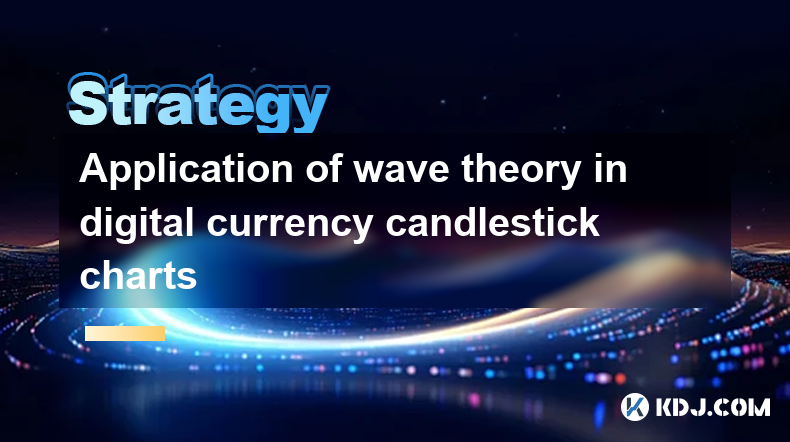
Understanding Elliott Wave Theory in Cryptocurrency Trading
Elliott Wave Theory posits that market prices move in specific patterns reflecting mass psychology. These patterns, or waves, are categorized into impulse waves (five waves moving in the direction of the main trend) and corrective waves (three waves moving against the main trend). Identifying these waves can help traders predict potential price movements. However, it's crucial to remember that this is not an exact science and requires practice and experience for accurate interpretation. The theory is applied to various timeframes, from short-term scalping to long-term investment strategies. Its effectiveness relies heavily on the trader's ability to correctly identify wave structures.
Identifying Impulse and Corrective Waves
Impulse waves, also known as motive waves, consist of five sub-waves (labeled 1, 2, 3, 4, and 5). Wave 3 is typically the longest and strongest, while wave 2 is a retracement of wave 1. Wave 5 often extends beyond the high of wave 3. Corrective waves, on the other hand, are composed of three sub-waves (labeled A, B, and C). These waves move against the prevailing trend and are characterized by different patterns like zigzags, flats, and triangles. Recognizing the difference between these wave types is fundamental to successfully applying Elliott Wave Theory.
Applying Fibonacci Retracements to Wave Analysis
Fibonacci retracement levels are often used in conjunction with Elliott Wave Theory. These levels (23.6%, 38.2%, 50%, 61.8%, and 78.6%) represent potential support and resistance areas within a wave structure. Traders may look for bounces at these levels during corrective waves or potential breakouts beyond them during impulse waves. Combining wave analysis with Fibonacci retracements can provide a more comprehensive view of potential price targets and reversal points.
Practical Application in Cryptocurrency Trading
Let's consider a hypothetical scenario. Imagine a cryptocurrency's price is showing a five-wave impulse pattern to the upside. After wave 5 completes, a three-wave corrective pattern might follow, retracing a portion of the previous gains. A trader using Elliott Wave Theory might anticipate a retracement to a Fibonacci retracement level (e.g., 61.8% of the entire impulse wave). This level could serve as a potential buying opportunity, anticipating the continuation of the uptrend with a new set of impulse waves. However, it's vital to remember that this is just one possible scenario.
Challenges and Limitations of Elliott Wave Theory
While Elliott Wave Theory offers a valuable framework, it’s not without limitations. Identifying waves can be subjective, and different traders may interpret the same chart differently. There's no universally accepted method for precise wave counting. Market noise can obscure the underlying wave structure, making it difficult to identify clear patterns. Furthermore, the theory doesn't predict the timing of price movements, only the potential direction and magnitude.
Wave Subdivisions and Complexities
Waves can be further subdivided into smaller waves, creating intricate patterns. This adds complexity to the analysis, especially for beginners. Understanding the nuances of wave subdivisions requires considerable experience and practice. Mistakes in identifying these smaller waves can lead to inaccurate predictions. Many traders use multiple timeframes to confirm wave patterns, comparing the larger picture with smaller, more detailed charts.
Combining Elliott Wave Theory with Other Indicators
Many traders combine Elliott Wave Theory with other technical indicators, such as moving averages, RSI, and MACD, to confirm potential trading signals. This multi-faceted approach can help reduce the risk of false signals and increase the accuracy of predictions. For example, a bullish divergence on the RSI could confirm the start of a new impulse wave identified through Elliott Wave analysis. This helps to add another layer of confirmation to trading decisions.
Risk Management and Position Sizing
Risk management is crucial when using Elliott Wave Theory. Even with careful analysis, there's always a risk of incorrect wave identification. Traders should implement appropriate stop-loss orders to limit potential losses. Position sizing is also important to prevent significant losses if a trade goes against the predicted direction. Never risk more capital than you can afford to lose.
Different Types of Corrective Waves
There are various types of corrective waves, each with its own unique characteristics. Zigzags are characterized by a sharp decline followed by a partial recovery and a further decline. Flats show a sideways movement followed by a sharp decline. Triangles are characterized by a series of converging highs and lows. Understanding these different patterns can significantly improve the accuracy of wave identification and trading decisions.
The Importance of Practice and Experience
Mastering Elliott Wave Theory takes time and dedication. Practicing on historical charts and observing real-time market movements is essential. It's also beneficial to study the works of renowned Elliott Wave analysts and learn from their experiences. Consistent practice will help improve the ability to identify wave patterns and make more informed trading decisions. Remember, experience is key to successful implementation.
Frequently Asked Questions
Q: Is Elliott Wave Theory reliable for predicting cryptocurrency prices?
A: Elliott Wave Theory is a helpful tool, but not a foolproof predictor. Its effectiveness depends heavily on accurate wave identification, which is subjective and prone to interpretation errors. It should be used in conjunction with other forms of analysis.
Q: How can I improve my ability to identify Elliott waves?
A: Practice is crucial. Analyze historical charts, study different wave patterns, and compare your analysis with that of experienced traders. Consider using multiple timeframes for confirmation.
Q: Can Elliott Wave Theory be used for short-term or long-term trading?
A: Yes, it can be applied to both short-term and long-term trading strategies. However, the complexity of wave identification increases with shorter timeframes.
Q: What are the common mistakes beginners make when using Elliott Wave Theory?
A: Common mistakes include misidentifying wave patterns, ignoring Fibonacci retracements, and failing to use risk management strategies. Improper wave counting is also a frequent issue.
Q: Should I solely rely on Elliott Wave Theory for my trading decisions?
A: No, it's always recommended to combine Elliott Wave Theory with other technical and fundamental analysis methods to make more informed and less risky trading decisions. Diversification in your analytical approach is key.
Disclaimer:info@kdj.com
The information provided is not trading advice. kdj.com does not assume any responsibility for any investments made based on the information provided in this article. Cryptocurrencies are highly volatile and it is highly recommended that you invest with caution after thorough research!
If you believe that the content used on this website infringes your copyright, please contact us immediately (info@kdj.com) and we will delete it promptly.
- Pi Network (PICOIN) price is down by 71% from its all-time high near $3, and crypto traders are now wondering whether this altcoin is still a good investment.
- 2025-04-10 11:25:14
- Bitcoin (BTC) Price Remains Above $87,000 as Market Awaits U.S. Data Releases
- 2025-04-10 11:25:14
- BlackRock Launches Bitcoin ETP (Tracking Bitcoin) in Europe
- 2025-04-10 11:20:15
- Immutable Games (IMX) Has Officially Dropped Its Investigations by the Securities and Exchange Commission (SEC)
- 2025-04-10 11:20:15
- BNB Price Eyes Key Upside Break
- 2025-04-10 11:20:13
- Top Beginner-Friendly Crypto Apps: Ka.app, Uphold, eToro
- 2025-04-10 11:20:13
Related knowledge
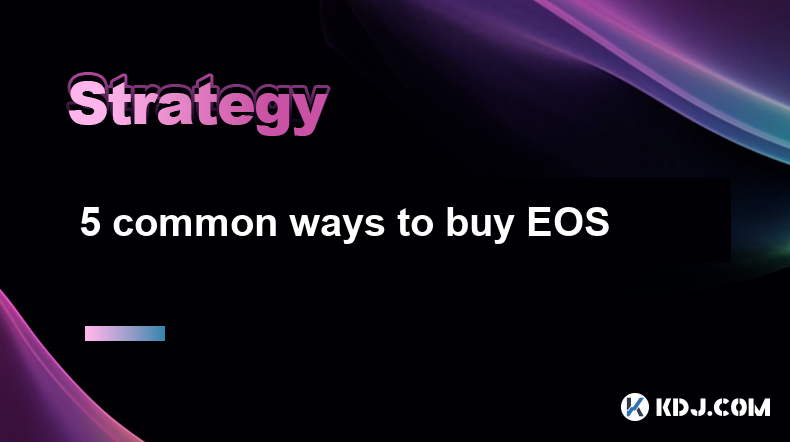
5 common ways to buy EOS
Apr 10,2025 at 01:14am
When it comes to purchasing EOS, one of the prominent cryptocurrencies in the blockchain ecosystem, there are several methods you can use. Each method has its own set of advantages and considerations. In this article, we will explore five common ways to buy EOS, providing a detailed guide on how to navigate each option effectively. Using Cryptocurrency ...
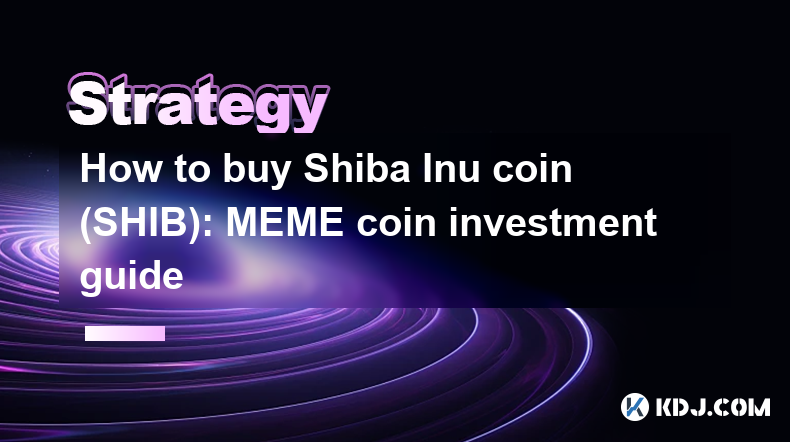
How to buy Shiba Inu coin (SHIB): MEME coin investment guide
Apr 10,2025 at 07:42am
Buying Shiba Inu coin (SHIB), a popular meme coin, can be an exciting venture into the world of cryptocurrency. This guide will walk you through the steps to purchase SHIB, provide insights into the coin's background, and offer tips on managing your investment. Whether you're a seasoned crypto investor or a newcomer, understanding how to buy and manage ...
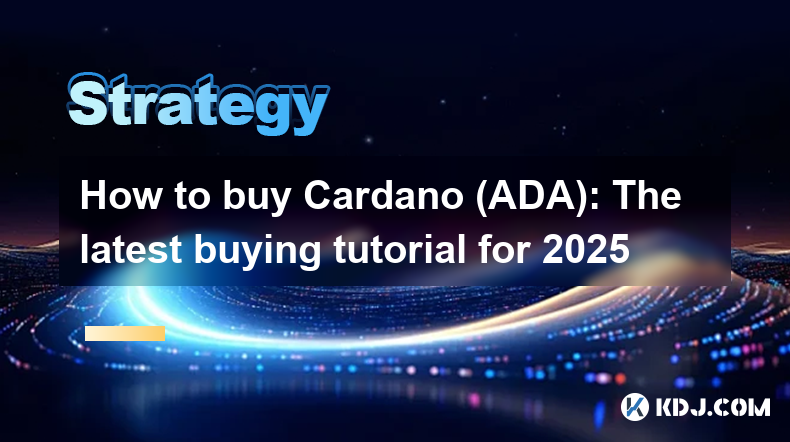
How to buy Cardano (ADA): The latest buying tutorial for 2025
Apr 09,2025 at 01:21am
Introduction to Cardano (ADA)Cardano (ADA) is a blockchain platform that aims to provide a more secure and scalable infrastructure for the development of decentralized applications and smart contracts. Created by Charles Hoskinson, one of the co-founders of Ethereum, Cardano differentiates itself through its rigorous academic approach and peer-reviewed ...
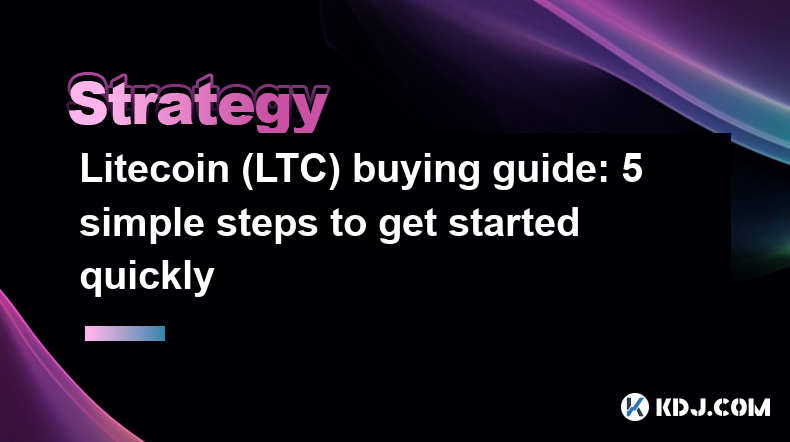
Litecoin (LTC) buying guide: 5 simple steps to get started quickly
Apr 09,2025 at 07:21pm
Litecoin (LTC) is a popular cryptocurrency that was created as a fork of Bitcoin. It offers faster transaction times and lower fees, making it an attractive option for many users. If you're interested in buying Litecoin, this guide will walk you through the process in five simple steps. Let's get started. Step 1: Choose a Reliable Cryptocurrency Exchang...
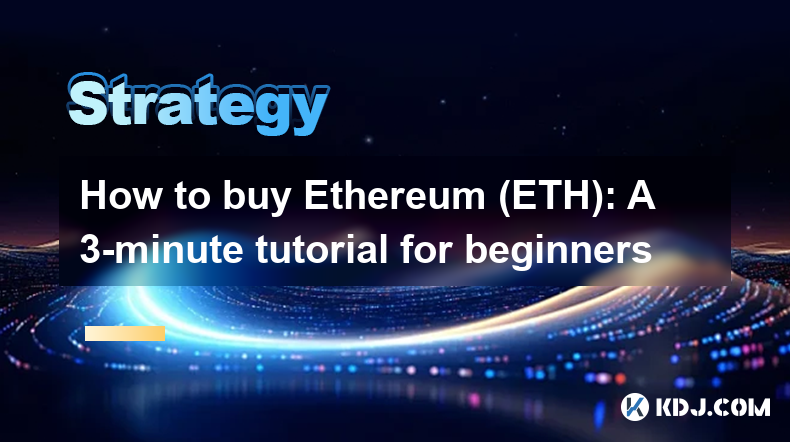
How to buy Ethereum (ETH): A 3-minute tutorial for beginners
Apr 10,2025 at 03:01am
Buying Ethereum (ETH) can be an exciting first step into the world of cryptocurrencies. This tutorial is designed to guide beginners through the process in just three minutes, ensuring you can start your crypto journey with confidence. Let's dive into the steps you need to follow to purchase Ethereum. Choosing a Cryptocurrency ExchangeThe first step in ...
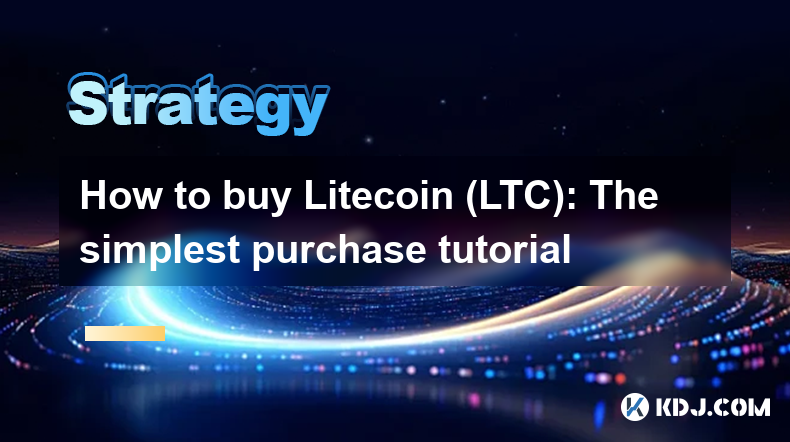
How to buy Litecoin (LTC): The simplest purchase tutorial
Apr 10,2025 at 05:42am
Buying Litecoin (LTC) can be a straightforward process if you follow the right steps. Litecoin, often referred to as the silver to Bitcoin's gold, is a popular cryptocurrency that can be purchased on various exchanges. In this tutorial, we will guide you through the simplest way to buy Litecoin, ensuring you understand each step thoroughly. Choosing a C...

5 common ways to buy EOS
Apr 10,2025 at 01:14am
When it comes to purchasing EOS, one of the prominent cryptocurrencies in the blockchain ecosystem, there are several methods you can use. Each method has its own set of advantages and considerations. In this article, we will explore five common ways to buy EOS, providing a detailed guide on how to navigate each option effectively. Using Cryptocurrency ...

How to buy Shiba Inu coin (SHIB): MEME coin investment guide
Apr 10,2025 at 07:42am
Buying Shiba Inu coin (SHIB), a popular meme coin, can be an exciting venture into the world of cryptocurrency. This guide will walk you through the steps to purchase SHIB, provide insights into the coin's background, and offer tips on managing your investment. Whether you're a seasoned crypto investor or a newcomer, understanding how to buy and manage ...

How to buy Cardano (ADA): The latest buying tutorial for 2025
Apr 09,2025 at 01:21am
Introduction to Cardano (ADA)Cardano (ADA) is a blockchain platform that aims to provide a more secure and scalable infrastructure for the development of decentralized applications and smart contracts. Created by Charles Hoskinson, one of the co-founders of Ethereum, Cardano differentiates itself through its rigorous academic approach and peer-reviewed ...

Litecoin (LTC) buying guide: 5 simple steps to get started quickly
Apr 09,2025 at 07:21pm
Litecoin (LTC) is a popular cryptocurrency that was created as a fork of Bitcoin. It offers faster transaction times and lower fees, making it an attractive option for many users. If you're interested in buying Litecoin, this guide will walk you through the process in five simple steps. Let's get started. Step 1: Choose a Reliable Cryptocurrency Exchang...

How to buy Ethereum (ETH): A 3-minute tutorial for beginners
Apr 10,2025 at 03:01am
Buying Ethereum (ETH) can be an exciting first step into the world of cryptocurrencies. This tutorial is designed to guide beginners through the process in just three minutes, ensuring you can start your crypto journey with confidence. Let's dive into the steps you need to follow to purchase Ethereum. Choosing a Cryptocurrency ExchangeThe first step in ...

How to buy Litecoin (LTC): The simplest purchase tutorial
Apr 10,2025 at 05:42am
Buying Litecoin (LTC) can be a straightforward process if you follow the right steps. Litecoin, often referred to as the silver to Bitcoin's gold, is a popular cryptocurrency that can be purchased on various exchanges. In this tutorial, we will guide you through the simplest way to buy Litecoin, ensuring you understand each step thoroughly. Choosing a C...
See all articles




















































































